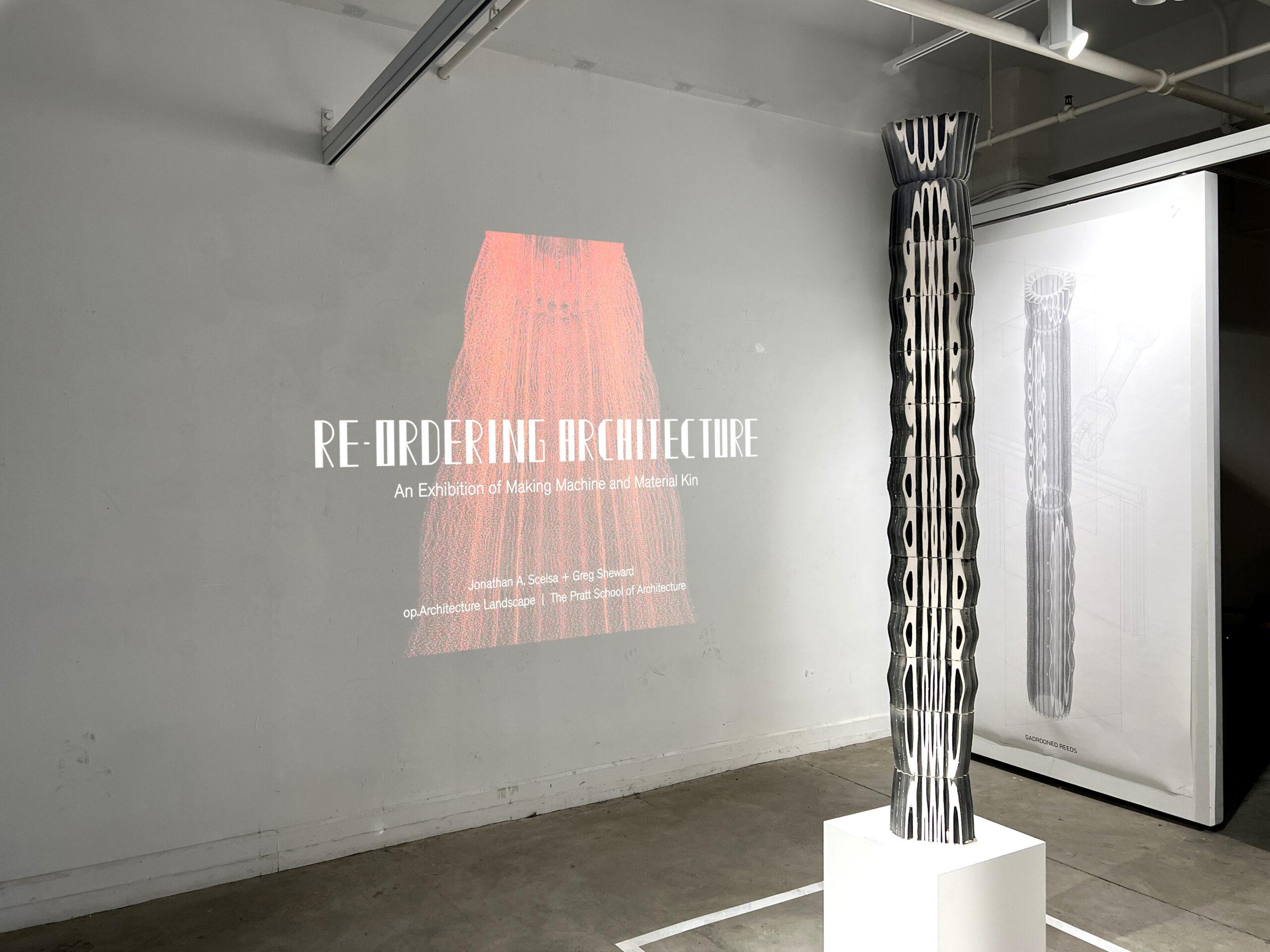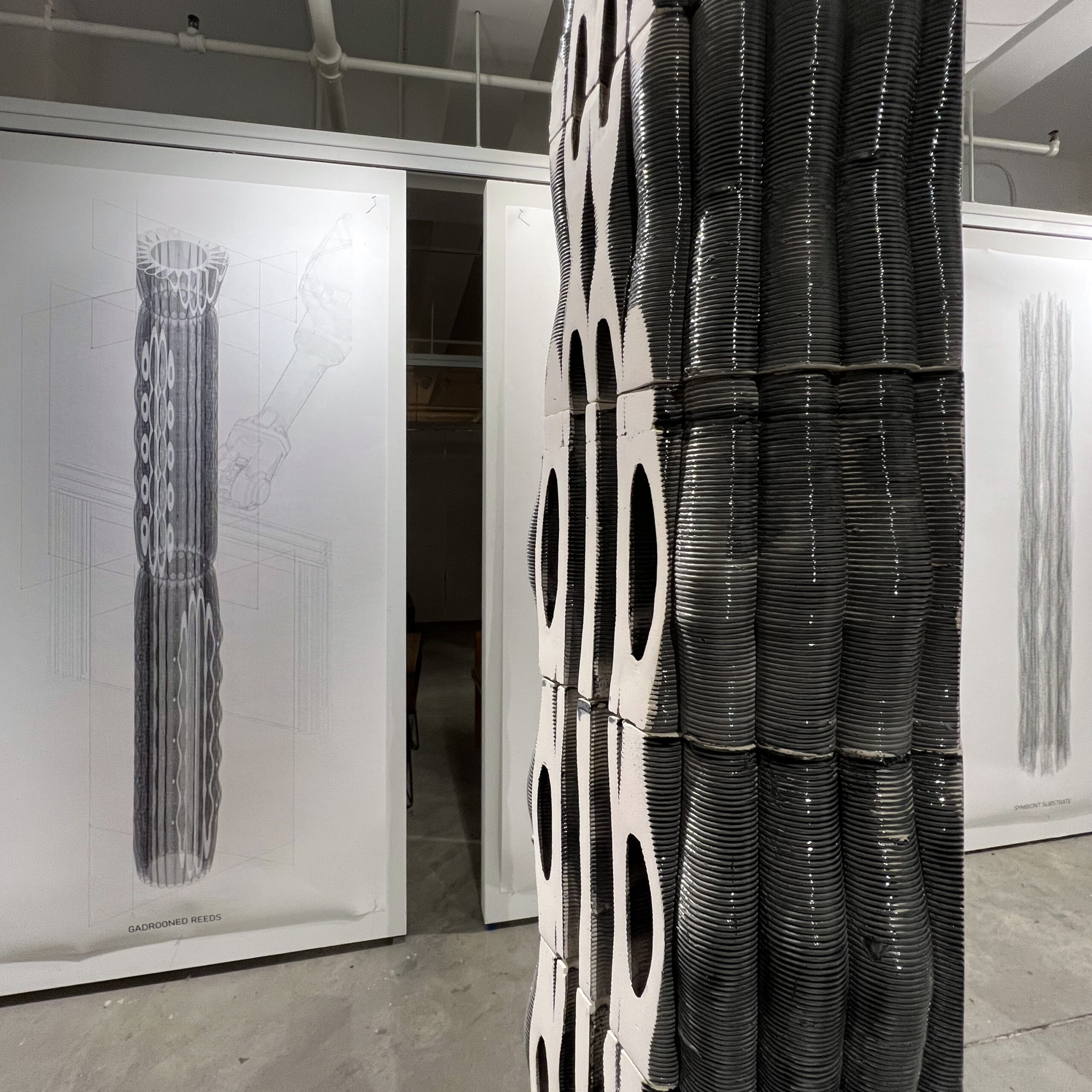Gadrooned Reeds: Robotic Clay Additions and Subtractions

Jonathan A Scelsa and Gregory Sheward
Nic Taylor, David Gonzalez
School of Architecture
Reordering Architecture inherently asks for us to consider different material, and different entanglements with ourselves and nature. Marc Antoine Laugier’s text, The General Principles of Architecture, established. Five rules that an architectural column must adhere to, three of which defined its appearance in relation to the natural element of the tree. These principles underscore the common practice where architecture is governed. By the extraction of the image of nature – wresting the outward appearances of a tree from its place and performance in an entangled web of ecological order or perhaps disorder.
Gadrooned Reeds proposes a different order, that asks us to re-examine our own anthropocentric construction practices and definitions of modern comfort by imagining the column as a site for non-human life and processes while simultaneously upholding the structural ordering. The project looks towards the wetland reed, both for its bundled form similar to the Egyptian Reeded column, but primarily for its hollow disposition.
The clay is deposed by the robotic process to inform hollow loops, which from the exterior produce a sense of a set of bundled reeds, which are pinched at points through the ornamental technique known as gadrooning. The gadrooning, which produces a non-repetitive extrusion, is then robotically cut by the planar pass of clay wire, providing visual access to the cavities which now form the space for life, water flow and possible vegetation. Each side of the column represents a different level of intrusion of the wire-cut therein producing a series of facial ornamental characters produced by the multiple types and scales of porosity the column provides its surrounding environment. The research work exhibited here will be of a 6 foot column, video describing its conception and fabrication, and prototypes that were integral to its process of creation. This research project, which occurred in the spring of 2023, was first exhibited during 2023 NY Design week, as part of the Reordering Architecture Exhibition at the Usagi Gallery.
